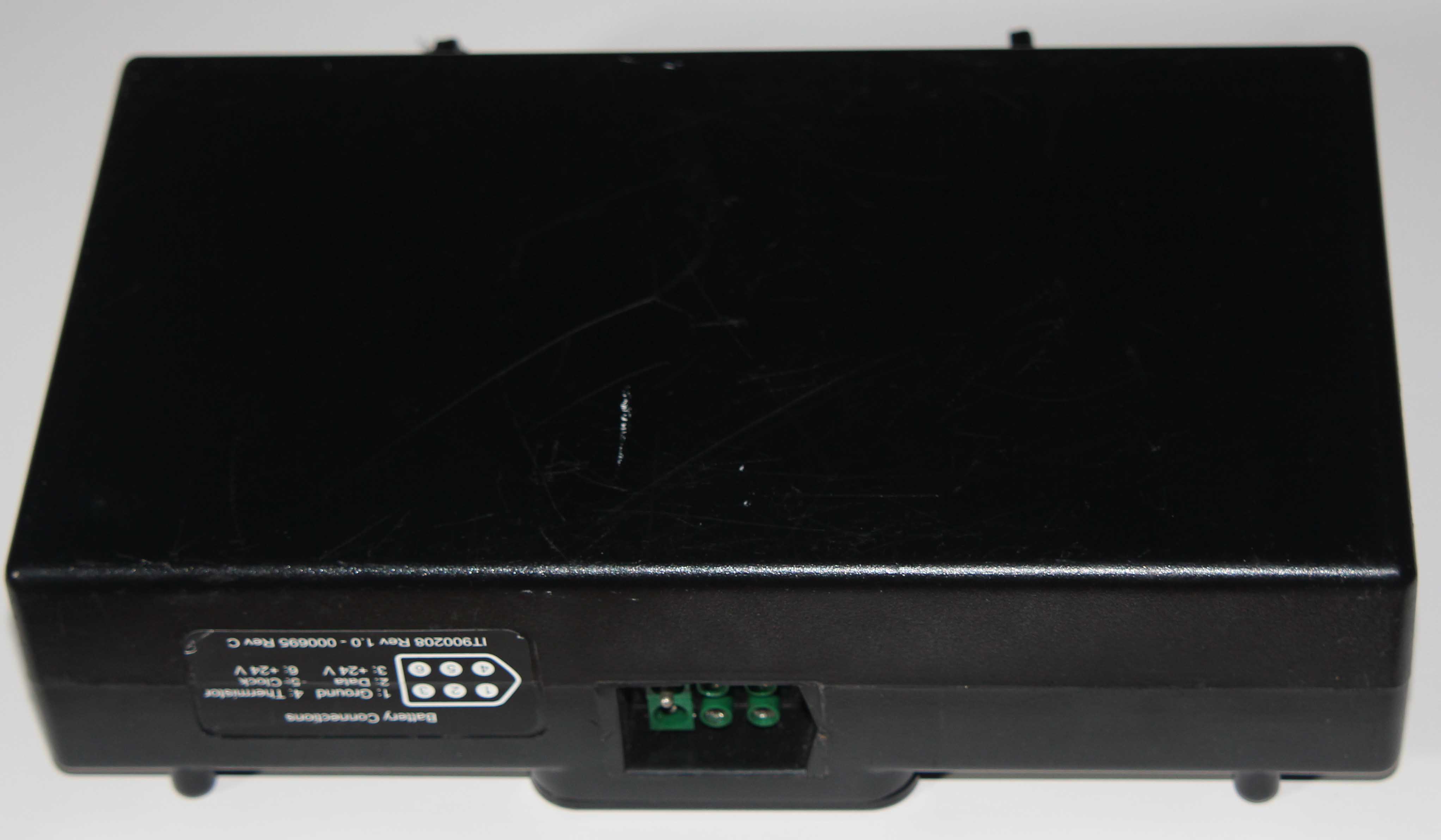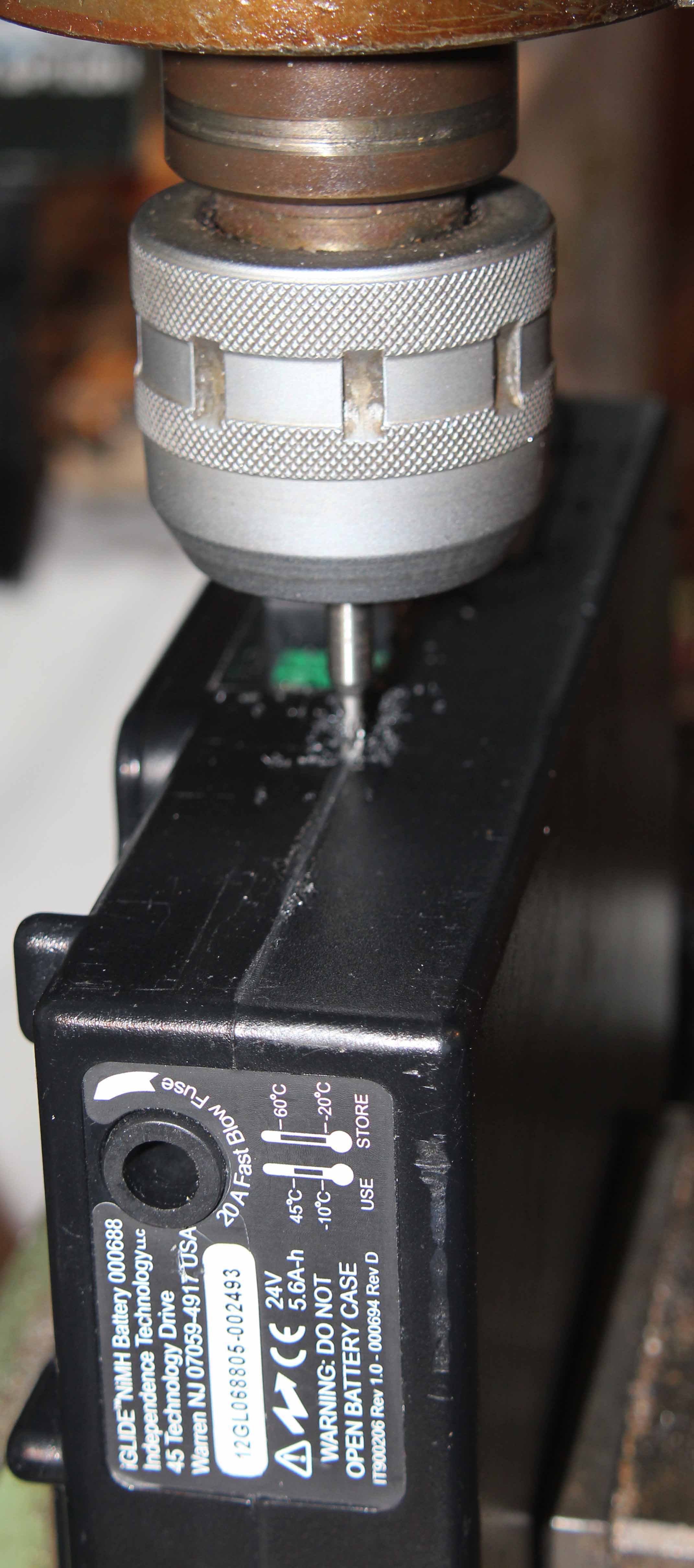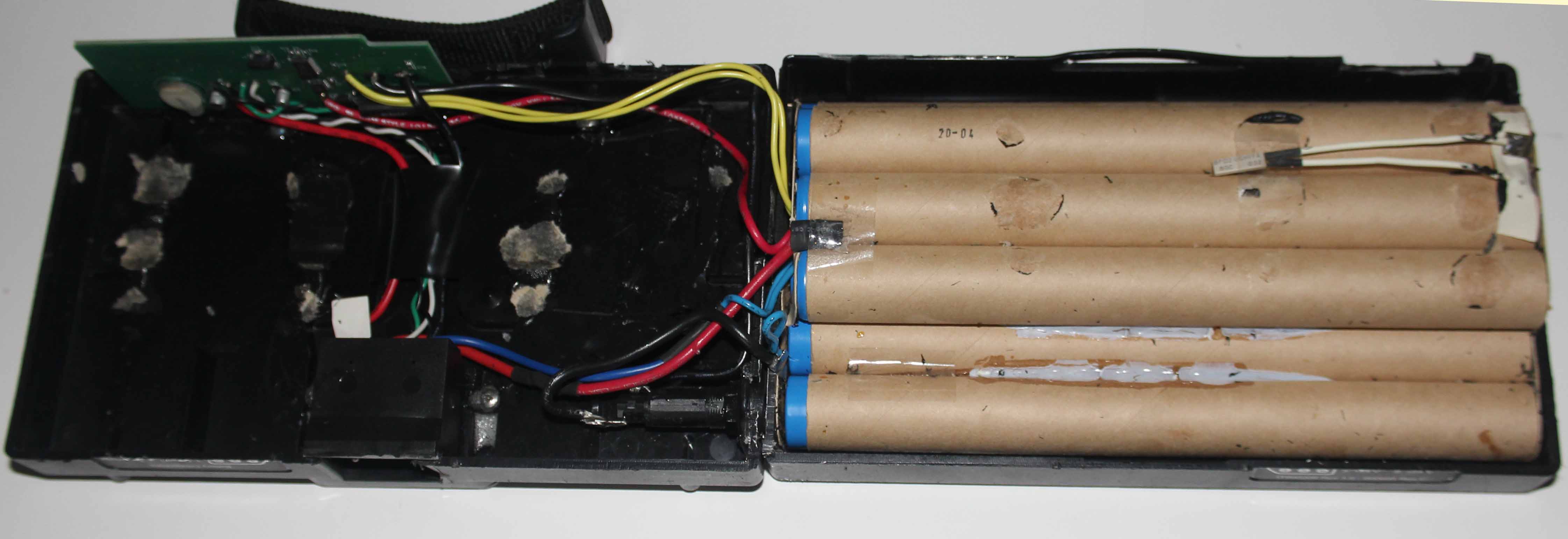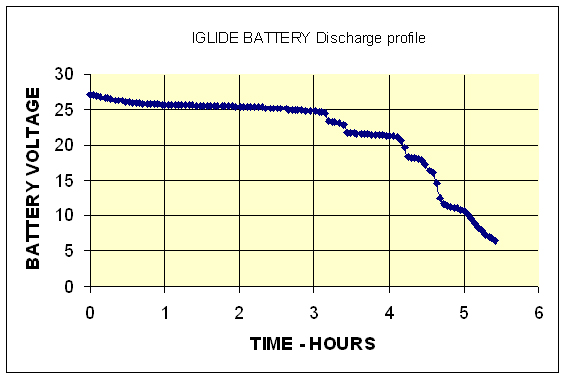
ALL MATERIAL COPYRIGHT KEVIN SCOTT 2011. LINKS TO THIS SITE ARE WELCOME BUT DO NOT COPY MATERIAL FROM THIS SITE TO ANY OTHER WEBPAGE.
If you find this site useful, please support it by making a donation of $1 to help maintain and develop it. Click on the PAYPAL DONATE button to do this safely. But there is no obligation - please avail yourself of the information and facilities of the site at no charge.

Iglide manual assist wheelchairs were fitted with a 5.6Ah battery pack which was charged with a Panasonic charger unit. These wheelchairs are now produced by Tailwind, but the battery units are expensive (£500) and a number have reported as failing in use. This may be simply due to their reaching the end of their life, but the battery pack which is the subject of this report actually did have a mechanical connection failure internally. The opening, repair and performance testing of the battery pack is described here.
The battery pack is contained in a black plastic case which is manufactured in two halves which glued together rather securely. There have been reports which describe the opening of the case with a knife, but in this case it was opened using a fine milling tool on a milling machine.

This has the advantage of very close control of the depth of cut which is important because in one corner a printed circuit board is mounted very close to the cemented surfaces and is vulnerable to damage if the tools used opening penetrate inside any more that a couple of millimetres. Using the milling tool, does have a disadvantage that a little of the plastic is lost and reassembly requires filling this gap appropriately.

Once open, the contents of the battery pack are shown in the photograph. The charge is stored in a pack of 40 sub-C NiMH cells arranged in two banks of 20 cells each. This gives a working voltage of 24 volts and a total capacity of 5.6 Ah. It is possible to replace the original cells with new higher capacity equivalents which are obtainable from many sources, for example from http://www.hellobatteries.co.uk/sub-c-nimh-rechargeable-batteries-25 The 5000mAh cells will double the capacity of the battery.
In the present repair, however the existing batteries met their specifications and were left in place.
.jpg)
The internal circuit inside the Iglide battery is shown schematically. A PDF of this circuit is available here.It is built around the PS331S intelligent battery charger chip, the data sheet for which is downloadable here. In the battery under investigation, this circuit seemed to be working correctly. There is a magnetic switch connected to pin 1 which activates the four LED "fuel gauge", indicating momentarily, the state of the battery. This switch is activated by a magnet attached to a sliding element in the handle and so the state of charge of the battery can be determined by sliding the handle end back and forth. Apart from being slightly unreliable in the example under study because the magnet was only just in range of the switch, the arrangement seemed OK.
As far as could be determined the internal circuit was not at fault. It could not be properly tested as it appears to require the battery to be installed in the wheelchair to function correctly, and the wheelchair was not present. The magnetic switch referred to above, appeared to have lost its envelope but was otherwise operating correctly. The fault which was preventing the battery operating correctly was a mechanical failure of one of the terminals to the fuseholder. This was corrected by resoldering the terminals.

The battery performance was tested by charging it fully using the specified charger unit and then discharging it through a 25 ohm 50 watt resistor while monitoring the battery voltage. A typical profile obtained from the battery under study is shown above. From total area under the curve, the battery capacity can be calculated and this amounted to 4.7 Ampere-hours. This is somewhat less than the specified 5.6 Ampere-hours for the battery, but the test was not continued to total exhaustion of the battery. It may have suffered some decay in its capacity during use and this is perhaps indicated by the steps in the descent of the curve as the battery nears exhaustion. These steps may be caused by some of the cells in the battery having as smaller capacity than others and therefore reaching exhaustion before the main bulk of the battery. These cells may, however, recover their full capacity with use, the battery having been idle and discharged for many months before this repair.